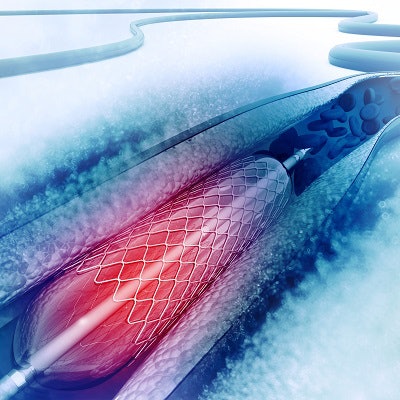
Coronary CT angiography (CCTA)-based radiomics features of pericoronary adipose tissue (PCAT) shows promise for identifying coronary artery in-stent restenosis, according to a study published May 31 in Academic Radiology.
The findings are good news for patient care, wrote a team led by Keyi Cui, PhD, of Tianjin Chest Hospital in China.
"The CCTA-based radiomics signature of PCAT has the potential to identify coronary artery in-stent restenosis without the need for additional costs or radiation exposure," the group noted.
In-stent restenosis is a major contributor to percutaneous coronary intervention failure, and it is typically identified via imaging, particularly coronary CT angiography, but CCTA's accuracy for this indication can be hindered by stent artifacts. That's why using pericoronary adipose tissue radiomics could improve CCTA for detecting in-stent restenosis, Cui's team noted.
The group sought to assess the diagnostic performance of using radiomic features of pericoronary adipose tissue on CCTA to identify in-stent scarring after patients underwent percutaneous coronary intervention via a study that included 165 patients with 214 eligible vessels. It developed three machine-learning models for identifying in-stent restenosis in a training cohort: radiomics, clinical, and integrated (this last included clinical features and Radscore data [which predicts the probability of in-stent restenosis using the radiomics model]).
The investigators identified in-stent restenosis in 79 vessels and 1,688 radiomics features from peri-stent pericoronary adipose tissue segmentations; after analysis, they chose to track nine features. The three different machine-learning models were assessed using the area under the receiver operating curve (AUC) measure.
The group found that the integrated model (clinical features plus CCTA radiomics) was most effective for identifying in-stent restenosis.
| AUCs of three different models for identifying in-stent restenosis | ||
| Model type | Training cohort | Validation cohort |
| Radiomics | 0.72 | 0.69 |
| Clinical | 0.75 | 0.62 |
| Integrated | 0.84 | 0.79 |
"The integrated model combining the clinical and radiomics features showed better diagnostic performance than the clinical model alone," the group reported.
Adding CCTA-radiomics to PCAT information makes detecting in-stent restenosis more effective, according to the authors.
"[The] CCTA-based radiomics signature of PCAT has the potential to identify coronary artery ISR without the need for additional costs or radiation exposure," they concluded.
The complete study can be found here.




















